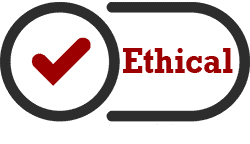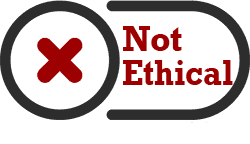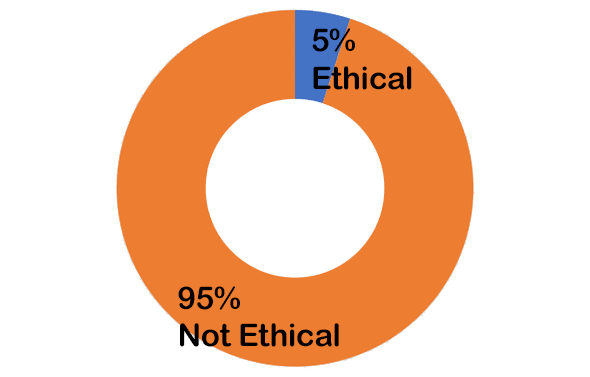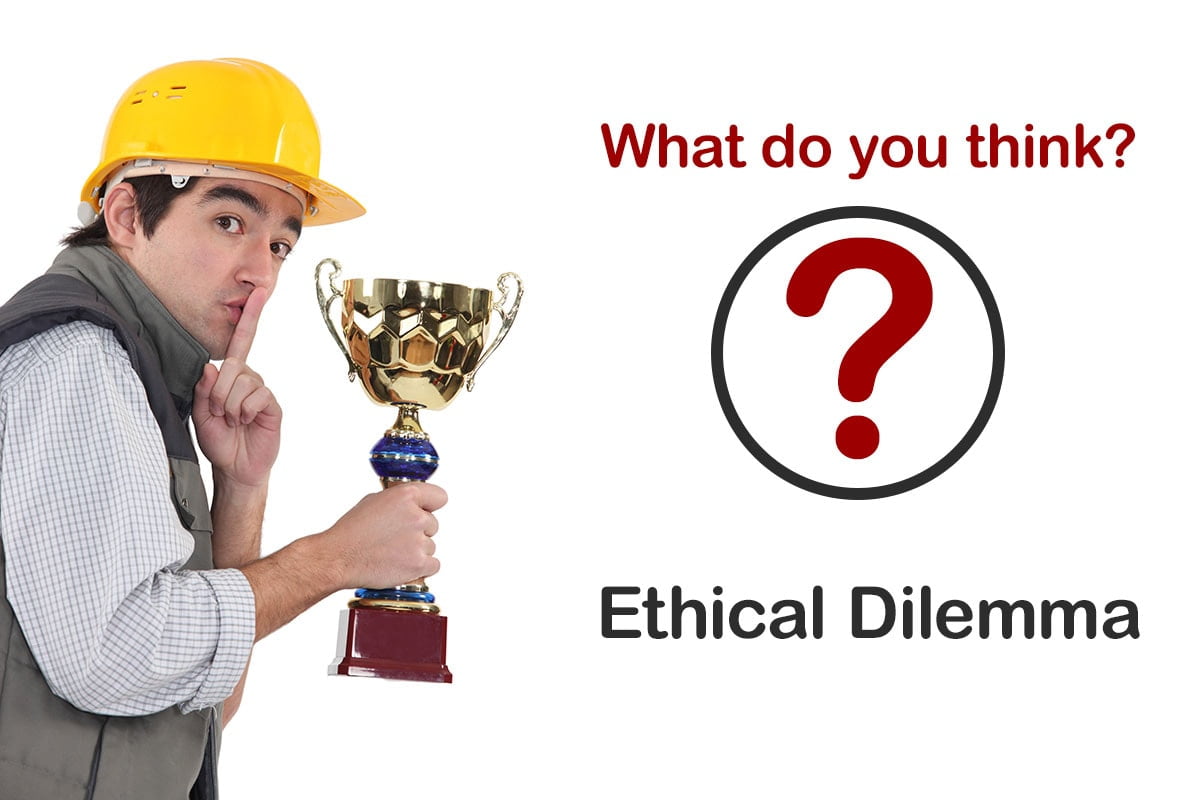This is the December 2020 edition of our monthly series of Ethics case studies titled What Do You Think? This series is comprised of case studies from NSPE archives, involving both real and hypothetical matters submitted by engineers, public officials and members of the public.
Your peers and the NSPE Board of Ethical Review have reviewed the facts of the case as shown below. And, here are the results.
Your opinion has been registered for the December 2020 edition of our monthly series of Ethics case studies titled What Do You Think?
Your vote is recorded as:

Want to know how your peers voted? We’ll send you an email with the poll results on December 29.
Your opinion has been registered for the December 2020 edition of our monthly series of Ethics case studies titled What Do You Think?
Your vote is recorded as:

Want to know how your peers voted? We’ll send you an email with the poll results on December 29.
A Review of the Facts
Engineer Brad is the principal in a new engineering firm that has been in existence for approximately 18 months. All of the engineers in the firm have come from other engineering firms. Brad develops a firm promotional brochure that contains the following: (1) a “list of clients” implying those companies on the list are clients of the firm; and, (2) a “list of projects of the firm” implying the projects were performed by the new firm. In fact, the client list is actually those companies who the firm’s engineers have performed work for with their former firms, and not with the new firm. Similarly, the project list is a series of projects performed by the firm’s engineers for their former firms.
Was it ethical for Brad to produce a promotional brochure for his new firm that contains (1) a “list of clients” implying those on the list are current clients of the firm and (2) a “list of projects” implying the projects were performed by the new firm?
Here is the result of our survey of your peers:

Applicable NSPE Code References:
Code II.3.a: Engineers shall be objective and truthful in professional reports, statements, or testimony. They shall include all relevant and pertinent information in such reports, statements, or testimony, which should bear the date indicating when it was current.
Code II.5.a: Engineers shall not falsify their qualifications or permit misrepresentation of their or their associates’ qualifications. They shall not misrepresent or exaggerate their responsibility in or for the subject matter of prior assignments. Brochures or other presentations incident to the solicitation of employment shall not misrepresent pertinent facts concerning employers, employees, associates, joint venturers, or past accomplishments.
Code III.3.a: Engineers shall avoid the use of statements containing a material misrepresentation of fact or omitting a material fact.
Discussion
Over the years, the Board of Ethical Review has considered a variety of issues relating to the departure of engineers from an engineering firm and the ethical responsibilities of both the former employer and the former employee in connection with the transitional phases of this event. For example, the Board has considered the reverse of this case—ethical responsibilities of an engineering firm when it is aware that an employee in the firm will be departing from the firm. Does the firm have an obligation to expeditiously correct firm promotional material so as not to mislead clients that an individual in the firm will continue in his or her present capacity with the firm? Similarly, the Board of Ethical Review has considered the ethical responsibility of engineers who hire engineers from other firms and any ethical responsibilities the principals of such firms have in relation to their professional colleagues with the other firm (see BER Cases 64-8, 69-5, 72-10, 77-11).
It is clear that these situations frequently present delicate and sometimes difficult situations, particularly where long-established business relationships exist between engineering firms, engineers, and their clients. Obviously, no engineer or engineering firm “owns” a relationship with a client, as clients are free to determine for themselves which engineer or engineering firm is appropriate for their present and future needs and requirements.
Under the facts, we are deeply troubled by the manner in which Brad promoted his new engineering firm, because we believe there was a clear effort to engage in misleading and deceptive acts. To imply that certain companies are the “clients” of the new firm and to imply and take credit for projects that were performed in an entirely different context by other engineering firms is wholly improper. We cannot identify any context in which Brad could have accurately used the term “client” to describe the new firm’s relationship with the companies listed on the brochure. A “client” implies some past or present business relationship between an engineer, the engineer’s firm, and a company. To use the term “client” to refer to a relationship that existed between an engineer when he was employed in an entirely different context is misleading, deceptive, and a violation of the NSPE Code of Ethics. We cannot think of any clarification that could have been included in such a brochure that would have made the reference to “client” less misleading or deceptive (see Code II.3.a., Code II.5.a., Code III.3.a.).
Similarly and for the same reasons, the reference to the “projects of the firm” is misleading, deceptive, and a violation of the NSPE Code of Ethics. Had the promotional brochure contained a clarification specifically stating that the projects identified were performed by current employees of the new firm when they were employed by the named firms, and depending upon all of the facts and circumstances, the Board may have reached a different result.
The Ethical Review Board’s Conclusion

It was unethical for Brad to produce a promotional brochure for his new firm that contained (1) a “list of clients” implying those on the list are current clients of the firm and (2) a “list of projects” implying the projects were performed by the new firm.
BOARD OF ETHICAL REVIEW
James G. Fuller, P.E., William W. Middleton, P.E., Robert L. Nichols, P.E., William E. Norris, P.E., Paul E. Pritzker, P.E., Jimmy H. Smith, P.E., C. Allen Wortley, P.E. (Observer), Donald L. Hiatte, P.E., Chairman
Note – In regard to the question of application of the Code to corporations vis-a-vis real persons, business form or type should not negate nor influence conformance of individuals to the Code. The Code deals with professional services, which services must be performed by real persons. Real persons in turn establish and implement policies within business structures. The Code is clearly written to apply to the Engineer and it is incumbent on a member of NSPE to endeavor to live up to its provisions. This applies to all pertinent sections of the Code. This opinion is based on data submitted to the Board of Ethical Review and does not necessarily represent all of the pertinent facts when applied to a specific case. This opinion is for educational purposes only and should not be construed as expressing any opinion on the ethics of specific individuals. This opinion may be reprinted without further permission, provided that this statement is included before or after the text of the case.









DEFINITELY UNETHICAL!!!
Interesting case study, but a clear example of unethical business practice.
However, if in the brochure, you mention that you did the work under another firm, like with the SF330, then you are ethical.
I agree. There is no remedy for the first statement concerning the new firm’s client list. A simple clarification could have rendered the second claim an ethical statement. They could have written something along the lines of “our engineers have worked on, or been involved with a number of project including…”
On brochures identifying previous experience, we have found it acceptable to list projects and clients from previous employers in an engineer’s resume, if the previous firm is clearly noted as the company credited with providing the service.
This is another very gray question that we’re being asked to answer in the black and white.
I would have no issue provided that Brad makes it clear that it was not his current firm that the projects were done by, but rather his current staff working for prior employers.
They key to me is that the promotional statements must be truthful and not leave out or mischaracterize anything to provide a misleading impression.
There is nothing wrong with Brad saying the current firm has assembled a team of engineers with a long history of work on projects X, Y and Z.
We all come from somewhere and we bring past experience to current situations.
Bad wording. TWO questions. ONE possible Yes – No answer.
It it NOT ETHICAL to list clients of new employees former employees ad clients of the new company.
But experience comes with the new companies new employees. Just a slight rewording of the second question, from :Projects” to “Project Experience”, and it would have been perfectly ethical to list the experience that the new employees of the new company had.
While not possibly as attractive it would have been simple to say the following which would have been true statements showing the staff experience without the misleading term “client”
Our engineering staff have worked on projects for the following companies:
and
Projects our engineering staff have worked on include:
As a retired PE, I have worked at 8 firms that did, unfortunately, claim credit for having performed experience on projects that was actually done by current employees at other firms.
NOT ETHICAL AND OBVIOUSLY SO! THIS GREATLY CONCERNS ME OF BRAD BEING IN THIS POSITION—“ONCE AN UNETHICAL PERSON—ALWAYS—“
This has got to be one of the most obvious situations I have seen presented. Just a few seconds thought says that if presented as stated, it is NOT ethical. All that was needed was to say we have engineers that have engineers that, while employed with another firm have worked on ________. Better if you could say something about your person’s status on that project, after all, worked on as a general statement could have meant anything from entry level draftsman to project manager.
I agree that would be the way to go. f